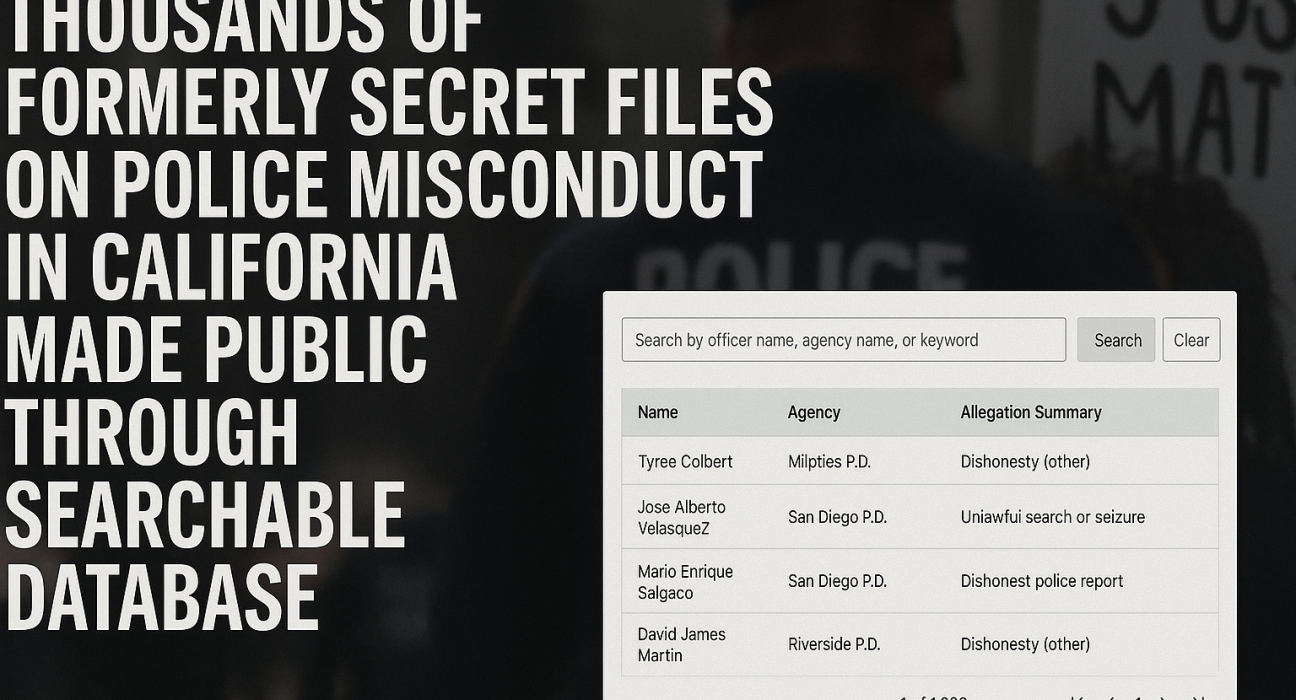On August 4, 2025, a landmark database—the Police Records Access Project—went live, providing unprecedented public access to formerly secret internal police records in California WIRED. Built over seven years by a coalition involving UC Berkeley, Stanford University, CalMatters, the Los Angeles Times, the San Francisco Chronicle, and public interest groups, the database contains roughly 1.5 million pages from nearly 12,000 misconduct and use-of-force cases across more than 400–700 law enforcement agencies in the state San Francisco Chronicle.
These records include a wide range of allegations: excessive use of force, dishonesty, sexual harassment, wrongful firing, unlawful arrests, and incidents resulting in death or serious injury—only those with sustained findings internally are included, in line with state legislation SB 1421 (2018) and SB 16 (2021) cdss.berkeley.edu. The purpose is to shine light on past secrecy, enabling the public, researchers, journalists, and even agencies hiring law enforcement personnel to scrutinize patterns of misconduct or force use across the state Los Angeles Times.
While law enforcement transparency laws were passed starting in 2018 (SB 1421) and expanded in 2021 (SB 16), many agencies resisted compliance—some delayed producing files, fought disclosure in court, or even destroyed records before deadlines The Independent. The collaborative database represents an effort to overcome these barriers through coordinated legal, journalistic, and technical work KQED.
The searchable interface allows queries by officer name, agency, or keyword, making widespread access to previously hidden information possible. Moving forward, additional records may be added as agencies comply or new investigations conclude KQEDLos Angeles .
Key Points
- Comprehensive Access: A public, searchable database now hosts nearly 1.5 million pages on ~12,000 misconduct/use-of-force cases in California.
- Broad Participation: Involves over 400–700 different law enforcement and oversight bodies across the state.
- Legislative Basis: Built under SB 1421 (2018) and SB 16 (2021), requiring release of records with sustained findings in serious misconduct incidents.
- Implementation Challenges: Many agencies resisted release—delays, litigation, or record purges were prevalent before public access initiatives succeeded.
- Public Utility: Opens use for journalists, researchers, civil rights groups, legal professionals, hiring authorities, and the general public.
Future Projections
Transparency & Oversight
The database sets a national precedent; other states may pursue similar systems. With inquiries now public, scrutiny on police behavior and disciplinary history will likely intensify, supporting calls for consistent public disclosure standards beyond California.
Research & Policy Reform
Researchers can parse systemic trends—such as frequency of sustained complaints, demographic disparities in use-of-force, or repeat-offender patterns. This data could guide legislative reforms or changes in training, hiring, and accountability practices.
Legal & Hiring Landscape
Defense attorneys and hiring agencies can use the database to vet officers’ past allegations or disciplinary actions, potentially influencing recruitment decisions or litigation outcomes.
Legislative Risks & Pushback
Despite progress, transparency gains could be threatened. A proposed bill—AB 1178—would limit public access by exempting “undercover” officers from disclosure, risking rollback of SB 1421/16-era progress KQED. Civil liberties groups warn of broad definitions that could suppress key records.
Public Trust & Institutional Reform
Broad public access may enhance accountability and trust, while exposing failures in internal disciplinary processes—such as delay tactics or lack of oversight documented by previous investigations and lawsuits The Guardian
Neutral Reflection
This unprecedented database marks a critical step in California’s direction toward policing transparency. Built on legislative reform and journalistic collaboration, it allows the public a clearer view into previously hidden misconduct allegations. Yet the durability of its impact depends on continued legislative safeguards. The potential reversal via AB 1178 highlights ongoing tension between transparency and institutional resistance. Ultimately, the database equips Californians—and potentially others—to assess and influence the systems meant to serve their safety.








Leave feedback about this
You must be logged in to post a comment.